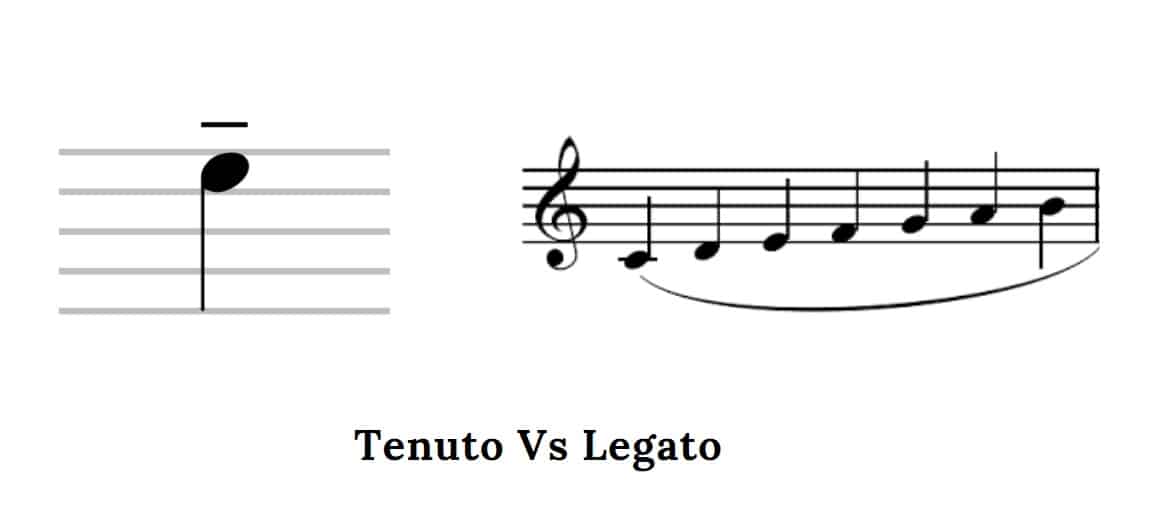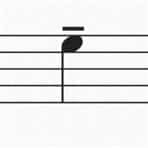
Music is no exception when it comes to technical terminology. There is a welterweight of different terms used throughout the history of Western Art Music, many in languages like Italian, German, French, and English. This makes the learning and application of these musical words all the more challenging for the aspiring musician. It can also lead to heated discussions about the precise meaning of any given term, especially when different periods of music are under consideration or different instruments and voices.
Tenuto Vs Legato
The two words in the title of this article are no exception and, in my experience, have been at the center of many an animated discussion regarding just how they should be played as well as when they should be written in a composition. Given that the words are Italian in origin, perhaps it makes sense to take a brief glance at the standard translations for each word.
‘Tenuto’ is an instruction to the performer to ‘hold’ the note maintaining it for its full notated value. ‘Legato’ means ‘tied together’ in Italian suggesting that the player should be singing or playing the notes in a joined-up manner. The polar opposite would be ‘staccato’.

Fig.1 is how ‘legato’ is most commonly indicated in the music. This long line can and often do appear above or below notes with the idea that the first note then links smoothly up to all the other notes under the line. Sometimes this can be thought of as a ‘slur’ but it is not the same as a bowing mark for string players.

Fig.2 then is the notation for ‘tenuto’. The line placed above the note (in this case as the stem of the note travels down from the note-head), invites the performer to ‘lean’ on the note and play it to its full value.
This may seem simple enough at first but when you take the time to look a little deeper you come to realize that there are additional factors involved in a performance. One of the first is the piece you are playing. Can we be certain for instance that Haydn’s ‘tenuto’ mark is the same as Bruckner’s? Did Chopin use ‘legato’ indications in his music the same way as Mozart? Here is where the debate heats up and musicologists can spend prolonged periods attempting to reach acceptable conclusions.
As a performer, it suggests that you ought to be informed about the performance expectations of any composer to better understand how they intended you to play their works. Intuition and interpretation, of course, play a vital part in the performance of any music, but there are numerous examples of some questionable professional renditions of standard repertoire pieces.
Depending on the instrument or voice you are performing on or with, alongside the period of music from which the piece originates, makes a huge difference to approaching legato or tenuto. If you are playing a tenuto on a clarinet, for example, the tongue is used in a flatter position to kind of push the note with a ‘da’ as opposed to a ‘ta’ for ordinary delivery. It produces an accented start to the note but a softer one allowing the pitch to then sounds to its full length.
Tenuto on a piano requires a little more bodyweight behind the note and a deliberate placing of the finger or fingers on the key, trying to avoid a fully accented timbre. The use of the sustain pedal may also be used to ensure the pitch or pitches ring freely on.
If you are performing a ‘legato’ passage on a string instrument such as violin, viola, or cello, then not only do you have to be aware of how you are placing your fingers but how you can bow effectively to produce a continuous, smooth series of notes. Avoiding noticeable changes of bow direction can be as much of a challenge for string players performing a legato phrase as it is for wind and brass players who need to breathe in a way that also does not break up the music.
These are just one or two illustrations of the influences on performance and performer when attempting either of these musical directions. Add into this mix the style or period of the music and you have a clearer picture of the complexities that surround how to approach these two musical directions. Experience helps and under the guidance of a seasoned professional teacher everyone can learn the most commonly accepted methods of performing a seamless ‘legato’ phrase or a perfectly placed ‘tenuto’ note.
Alternatively, the internet is an invaluable source of commentary and exceptional performances by amateur and professional performers alike. This can independently support your understanding of how these two notations sound in the performance of a wide selection of periods of music.
From the perspective of a composer, these two notations are quite distinct. If I add a ‘tenuto’ marking to a note or series of notes what I am most often hoping will be played is an emphasized note that is held on for the full duration and perhaps with the dynamic slightly louder at the start of the note, diminishing over the length of the note or chord.
Sometimes I will use the ‘tenuto’ as opposed to the ‘accent’ to draw attention to a weaker rhythm, a subtle harmonic change or just to bring weight to a note or chord that otherwise might be overlooked by the performer.
The ‘legato’ indication whether written in words or indicated by a long line (see Fig.1), what I intend is for the player to move almost imperceptibly from one note to the next, to form an even phrase. There may also be the occasion to add an additional instruction such as espressivo, (expressive), or dolce, (sweetly), but naturally, this depends on the musical context. Ultimately, composers rely on the expertise of the performers as well as musical convention.

MUSIC SHOULD BE AN OBLIGATORY DISCIPLINE IN SCHOOL DURING ALL LEARNING PERIOD.